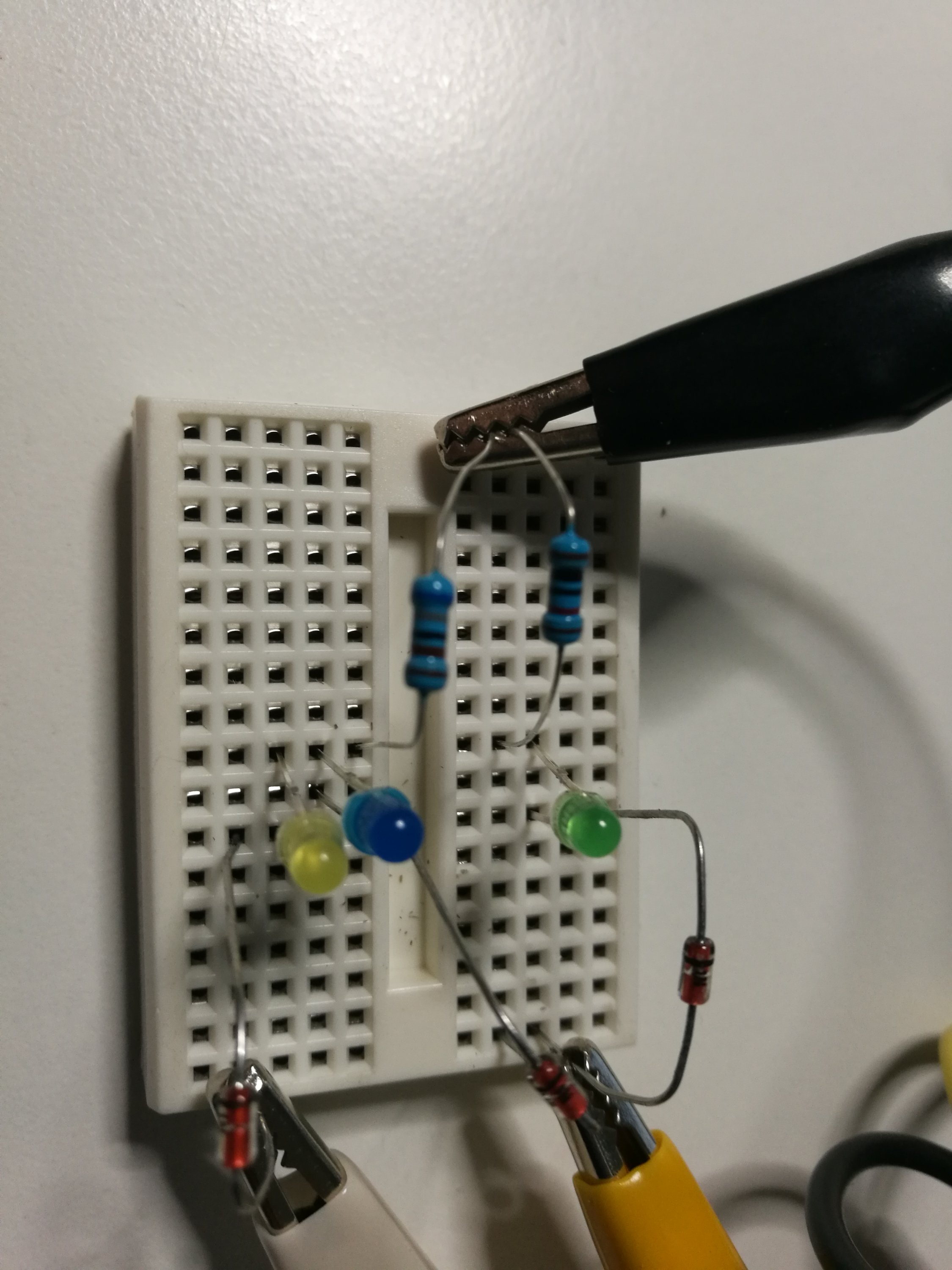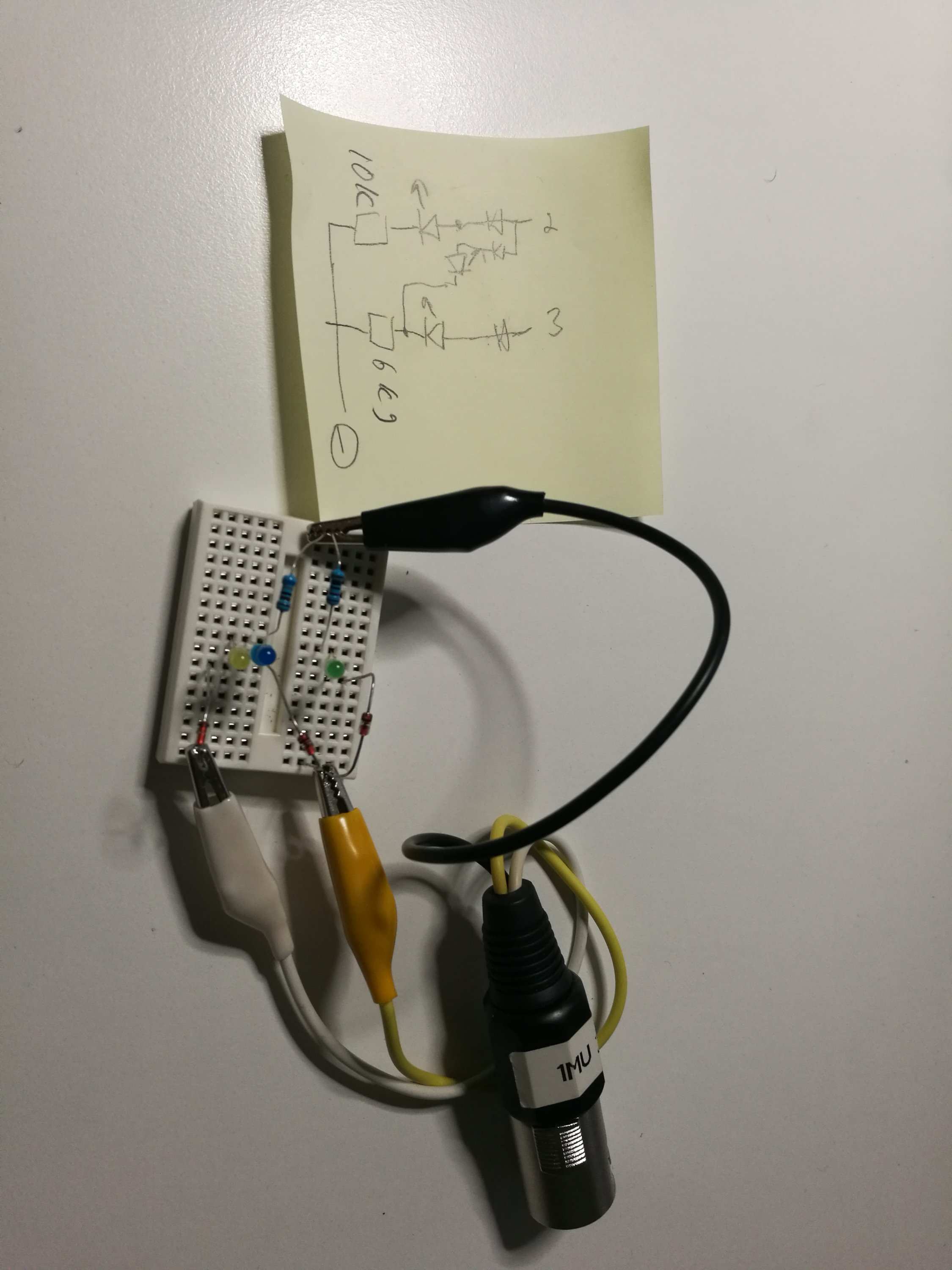I saw presentation of Sound Tools XLR Sniffer/Sender at https://www.ratsoundsales.com/mm5/merchant.mvc?Screen=PROD&Product_Code=soundtools-xlr-snifsend
It was described:
“Quickly troubleshoot faulty mic lines and cables with this set of remote end cable testers. The XLR Sniffers can also utilize phantom power to test snake lines and cables in live environments, making it simple to diagnose issues and get your show up and running.
When you need to know quickly whether it’s the mic or the line, the XLR Sniffer/Sender duo will give you an instant result.
The Sniffer unit has 3 LED lights. When attached to an XLR cable that is powered by a phantom power source (either a console or the Sender unit), the Sniffer will light up in either green or red LEDs to show whether the line is good (all green) or has errors (all red or a combination of red and green). The XLR Sniffer/Sender can even test for a pin 2-3 short.
Sniffer and Sender units are not intended to replace a multi-meter during your repair phase. These are designed as a fast way to test for faulty XLR cables and phantom power in the field.”
I saw some videos of this product also:
I started wondering how it works. I did not figure out all the details based on just web pages and some idea. Then got idea to design my own version of idea.
Here it it:

Results:
All LEDs output light = Everything OK
Left and right on, center off = Short between pins 2 and 3
Left LED off = pin 2 not connected or shorted to ground
Right LED off = pin 3 not connected or shorted to ground
All LEDs off = not plugged in or phantom power missing or ground connection missing
Here are the circuit details of my idea that is designed to work with standard 48V phantom power supplied by an audio mixer:

The circuit is based on the idea that it takes phantom power from the mic line to light two LEDs. There are somewhat different load from pins 2 and 3 to ground. This causes some voltage difference between those pins, which is enough to light up the third LED if everything is correct. That’s the basic idea. In addition to LEDs and current limiting resistors, there are three diodes (1N4148) that protect the LEDs agains too much reverse voltage that cold occur on some wiring errors cases.

I am still waiting to build final version inside an XLR male plug.
9 Comments
Tomi Engdahl says:
Ouch! Responding to some Internet Snark, XLR Sniffer Challenge
https://www.youtube.com/watch?v=N6wjsJVk_bM
Tomi Engdahl says:
Analog Down Cat5e SoundTools CatBox and XLR Sniffer
https://www.youtube.com/watch?v=YlKfmDZUTpM
The Cat Snake allows 4 balanced analog audio lines to be sent down a cat5, cat5e or cat6 cable. A simple and reliable way to run send analog down cost effective shielded cat5 cable.
Tomi Engdahl says:
http://www.stagecenterblog.com/the-live-sound-engineer-toolkit-diy-phantom-power-sniffer/
Tomi Engdahl says:
https://www.facebook.com/groups/517919938413134/posts/Tomi-Engdahl-posted-in-Pro-Audio-DIY/1545369079001543/
Tomi Engdahl says:
It’s pretty common to use M-M infrastructure connections since they’re much less prone to being rendered inoperable by things like chewing gum, etc.
Sadly people in general are arseholes and male XLRs are much easier to keep clean and serviceable
Tomi Engdahl says:
https://www.facebook.com/groups/DIYAudio/permalink/5240927875973016/
i have a question to ask… i searched the internet and i have some contradicting information. i’m doing DIY XLR cables. because the neutrik came with an additional tab for shell grounding. should i be connecting it to the common pin 1 ground or leaving it unterminated ?
some say not recomended to connect to ground, some say it’s advisable to connect to the common ground…. what should i do about this ?
switch craft XLR doesn’t have this. so this is the first time i’m seeing grounding on the case.
…
The shell ground should not be connected to the 0v signal wire in the cable.
Nearly every XLR I’ve come across pre made they’ve done that. 0v ground, and chassis ground are separate nodes, by connecting 0v ground to shell, with metal XLR connectors you short 0v to chassis ground, which can create ground loops.
Or put simply (no malice intended), there’s a reason they went with a 3 pin plug, and didn’t just use the connector shell for 0v.
Tomi Engdahl says:
there are gender changers made for XLR but I don’t think it would be safe for power
https://youtu.be/lRxwpvguX1o
Tomi Engdahl says:
http://www.seetronic.com/m/index.php
iAiWkI3ssZ says:
6223 582706I used to be a lot more than pleased to seek out this internet-site.. I dont even know how I ended up here, but I thought this post was excellent. A whole lot a lot more A rise in Agreeable. 374934